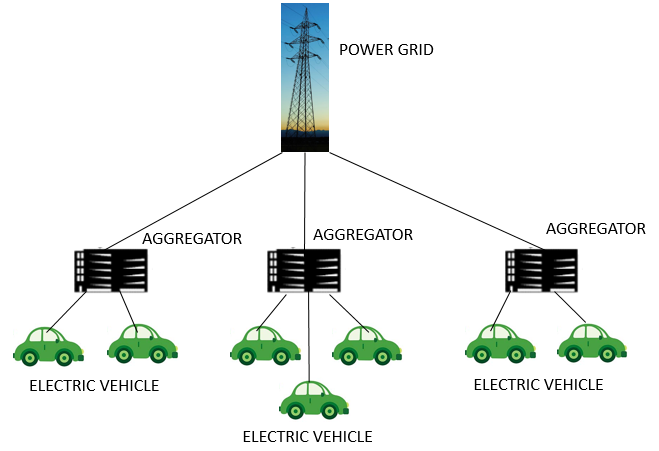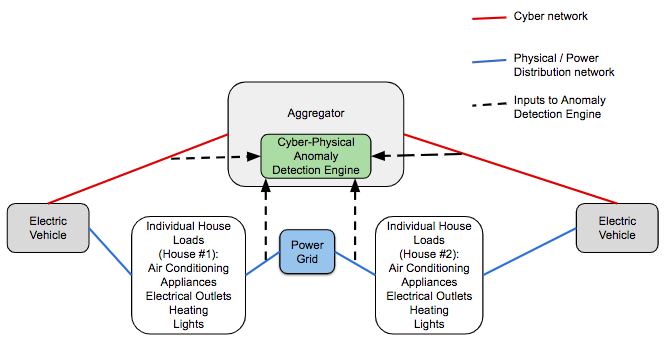S Lab
[Sibin Mohan]
Systems Security Research Group at GWU and University of Illinois

Secure Integration of Distributed Energy Resources with Power Grid
Team Members
Collaborators
- Tim Yardley, UIUC
- Steve Granda, UIUC
- Devu Manikantan Shila, UTRC
- Lynn Ren, UTRC
- Hao Zhu, UT Austin
- Shanny Lin, UT Austin
- Tom Carroll, PNNL
- Penny Mckenzie, PNNL
- Jereme Haack, PNNL
Overview
A wide variety of distributed energy resources (DERs) such as pluggable electric vehicles (EVs), solar arrays, smart buildings,etc. are now being connected to the power grid. Malicious adversaries can use these as entry mechanisms to gain access to the grid with the intention of creating instability in the system. This work focuses on secure integration of DERs with the power grid and in particular, EVs. To this end, we propose techniques to detect malicious activity when either the DERs or the communication channels between the DERs and the smart grid components are compromised. We design a Cyber-Physical Anomaly Detection Engine to ensure that critical grid components remain secure. In particular, we focus on the vehicle-to-grid (V2G) system. In this context, aggregators are the critical components through which DERs such as EVs are connected to the grid. The Cyber-Physical Anomaly Detection Engine for aggregators manages their communication with the EVs. The anomaly detection engine cross validates power related data on the V2G cyber network with power measurements from sensors on the physical/power distribution network. Since the V2G system is time-sensitive, the anomaly detection engine also monitors timing requirements of the system such as checking frequency constraints on messages at the aggregator apart from monitoring the data constraints to ensure safety of the aggregator.


Funding
This project is supported in part by grants from the Dept. of Energy (DoE) and the National Science Foundation (NSF).
Related Publications
-
C. Niddodi, S. Lin, S. Mohan and H. Zhu, “Secure Integration of Electric Vehicles with the Power Grid”. Accepted for publication in the IEEE International Conference on Communications, Control, and Computing Technologies for Smart Grids (SmartGridComm), October 2019.
-
C. Niddodi, S. Mohan and T. Yardley, “Securing Electric Vehicles in the Power Grid”. Published in the Work in Progress session of EUROMICRO Conference on Real-Time Systems (ECRTS) held in Dubrovnik, Croatia, June 2017.